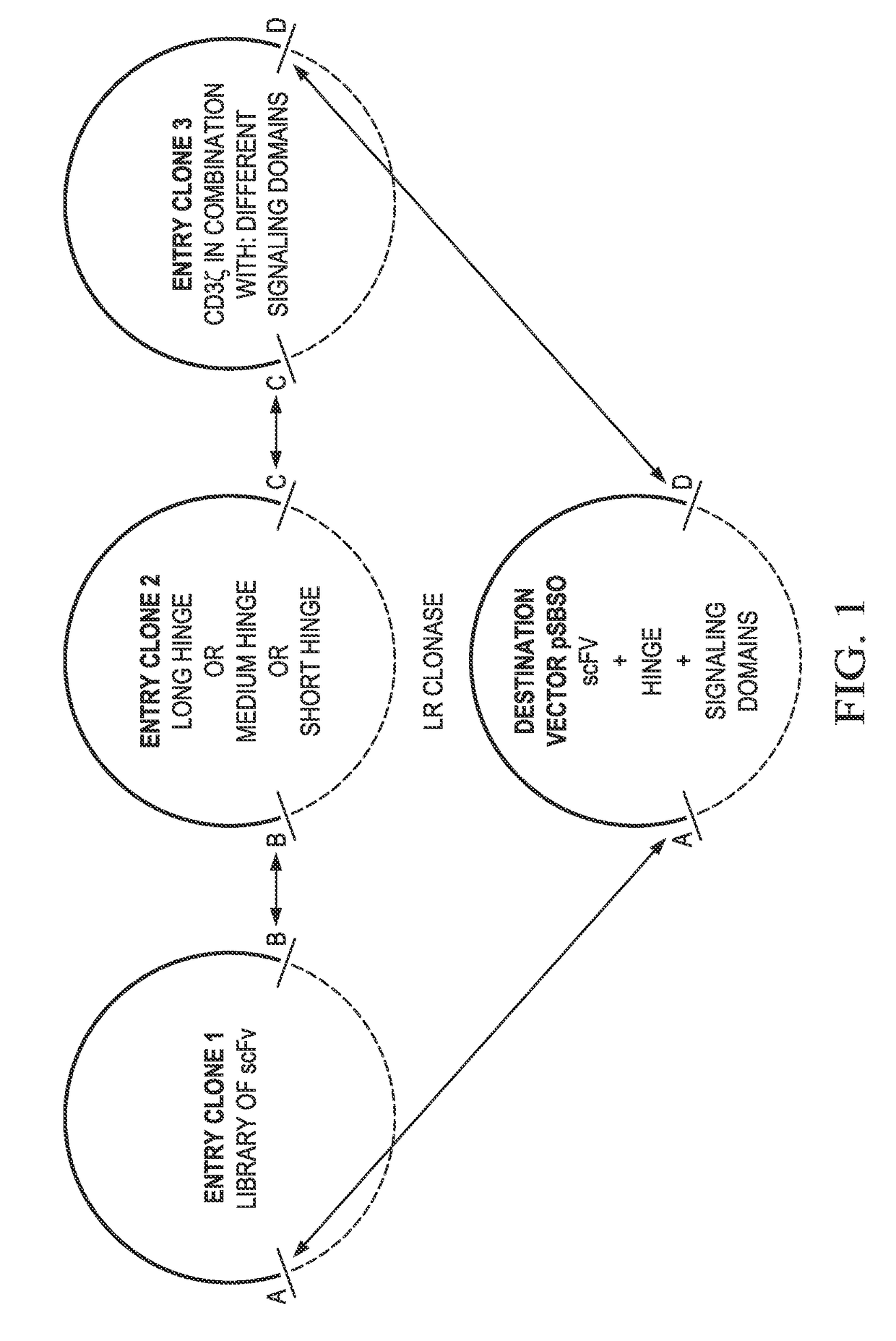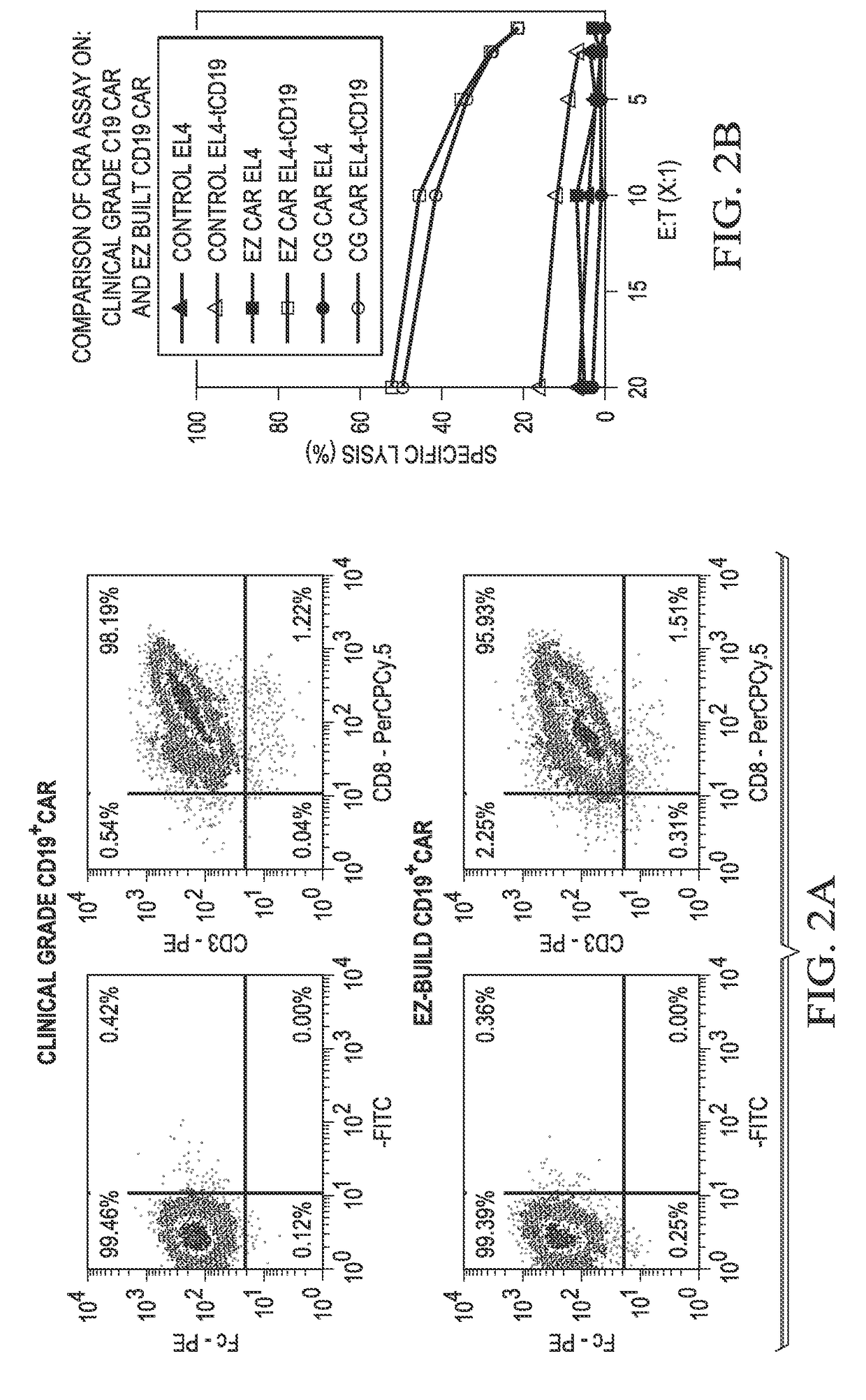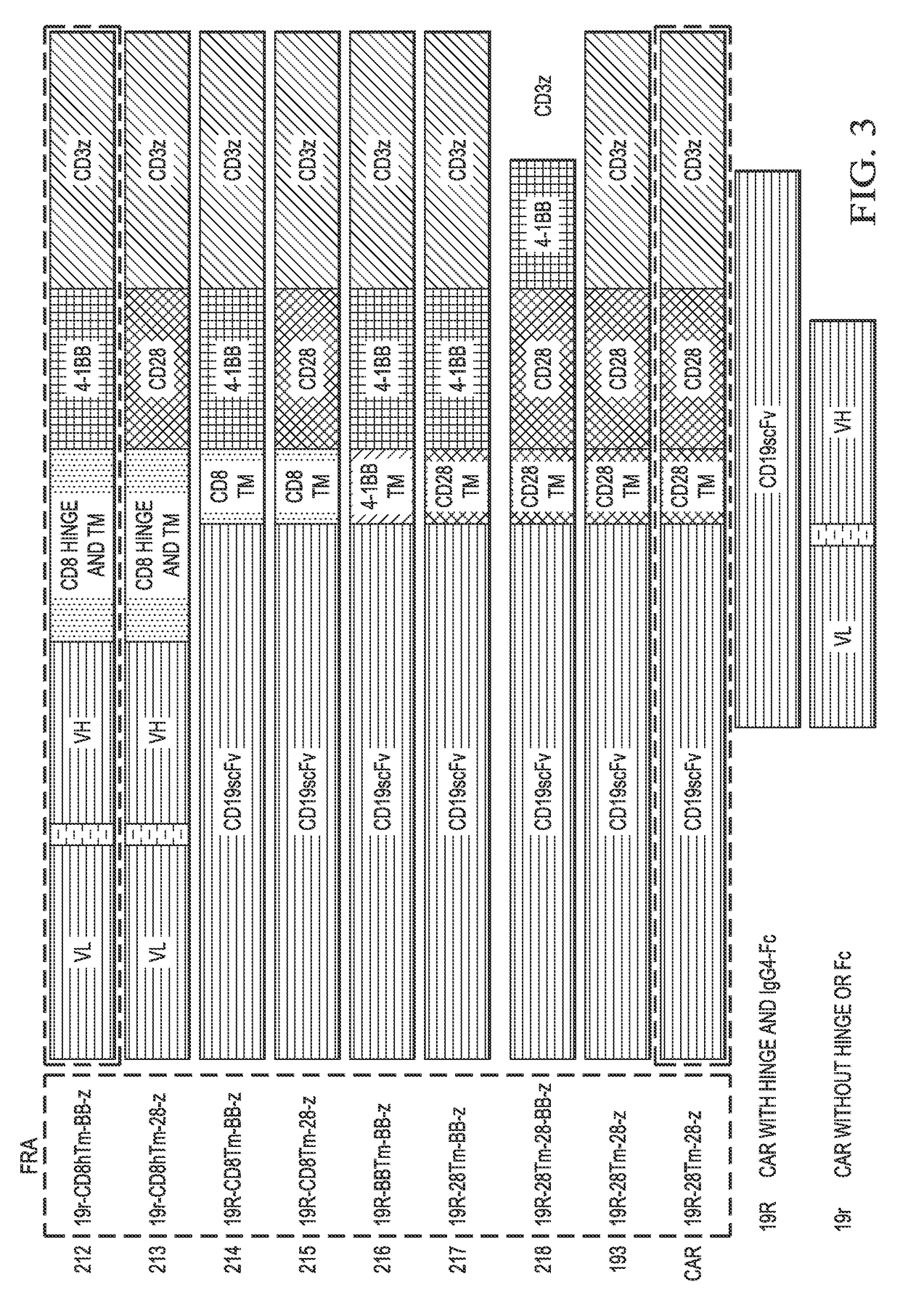Chimeric antigen receptors and methods of making
a technology of chimeric antigen receptors and receptors, which is applied in the field of molecular biology and medicine, can solve the problems of significant variability and it is difficult for clinicians to anticipate which car may display therapeutic activity against a given cancer or subtype, and achieve the effect of improving the therapeutic potential
- Summary
- Abstract
- Description
- Claims
- Application Information
AI Technical Summary
Benefits of technology
Problems solved by technology
Method used
Image
Examples
example 1
Materials and Methods
[0101]Generation of Clinical-Grade DNA Plasmids
[0102]The SB transposon, CoOpCD19RCD28 ζ / pSBSO, expresses the human codon optimized (CoOp) 2nd generation CoOpCD19RCD28ζ CAR under EF-1 / HTLV hybrid composite promoter (InvivoGen) comprised of Elongation Factor-1a (EF-1a [Kim et al., 1990] and 59 untranslated region of the Human T-Cell Leukemia Virus (HTLV) [Singh et al., 2011; Davies et al., 2010]. The derivation of this DNA plasmid is described in FIG. S1. The SB transposase, SB11, under the cytomegalovirus (CMV) promoter is expressed in cis from the DNA plasmid pCMV-SB11 (Singh et al., 2011; Singh et al., 2008). Both plasmids were sequenced in their entirety and manufactured by Waisman Clinical Biomanufacturing Facility (Madison, Wis.) using kanamycin for selection of the bacterial strain E. Coli DH5a.
[0103]Generation of Triple Site-Specific Recombination DNA Plasmids—EZ-Build-CARS
[0104]Using the DNA sequence from the CAR described above (CoOpCD19RCD28z / pSBSO), t...
example 2
Generation of CD19+ CAR
[0118]A CD19+ CAR was generated using the methods described above in Example 1 (referred to as the “EZ” method). These CD19+ CAR (CD19CAR) were compared to a clinical grade (“CG”) CD19CAR generated via a previous method.
[0119]The data showed that the triple site-recombination system generated a CD19CAR (EZ) similar to the clinical grade CD19CAR (CG). The footprints left by recombination-sites in the plasmids did not interfere in the expression and function of the CAR (FIGS. 2A-B).
example 3
Generation of CAR Containing (CD8, CD28) Transmembrane Domains and (CD28, 4-1BB) Signaling Domains
[0120]Various CARs tested have shown similar expansion, cytotoxicity, and Th1 cytotoxicity. CD19-BB-z has shown lower production of Th2 cytokines; in vivo, it was efficient in controlling disease in mice (Molecular Therapy 17 (8): 1453-1464, 2009). Nonetheless, a concern exists due to the fact that cells persisted in vitro without antigenic stimulation.
[0121]CARs in the clinic are shown below in Table 2. In some embodiments, a CAR of the present invention does not have the specific construct as shown in the below Table 2. Alternately, in some embodiments, methods of the present invention may be used to generate another variation of a CAR having the characteristics of the CAR mentioned below in Table 2 that is nonetheless distinct from the CAR currently being used in the clinic.
TABLE 2CARs in the ClinicClinical TrialUPennCooper (MDACC)Gene TransferLentivirusElectroporation / MethodSleeping...
PUM
| Property | Measurement | Unit |
|---|---|---|
| Recombination enthalpy | aaaaa | aaaaa |
Abstract
Description
Claims
Application Information
 Login to View More
Login to View More - R&D
- Intellectual Property
- Life Sciences
- Materials
- Tech Scout
- Unparalleled Data Quality
- Higher Quality Content
- 60% Fewer Hallucinations
Browse by: Latest US Patents, China's latest patents, Technical Efficacy Thesaurus, Application Domain, Technology Topic, Popular Technical Reports.
© 2025 PatSnap. All rights reserved.Legal|Privacy policy|Modern Slavery Act Transparency Statement|Sitemap|About US| Contact US: help@patsnap.com



